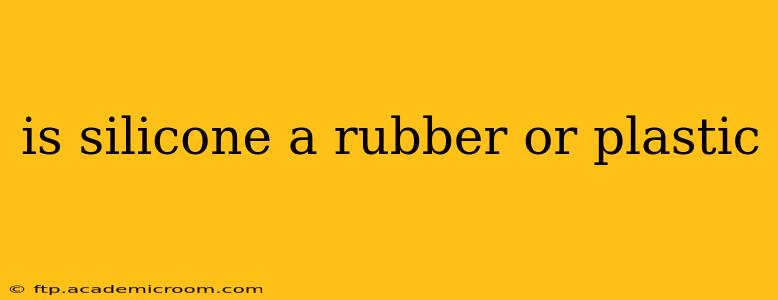Silicone is a fascinating material often causing confusion because it shares characteristics with both rubber and plastic, yet it's distinctly different from both. This article will delve into the chemical composition and physical properties of silicone to clarify its classification and unique attributes.
What is Silicone?
Silicone, also known as polysiloxane, is a synthetic polymer composed of a silicon-oxygen backbone chain (–Si–O–Si–O–) with various organic groups attached to the silicon atoms. This unique structure is responsible for its unusual properties. Unlike traditional rubbers and plastics, which are primarily carbon-based, silicone incorporates silicon, leading to significant differences in behavior and applications.
Silicone vs. Rubber: Key Differences
While silicone shares some similarities with rubber in terms of flexibility and elasticity, there are crucial differences:
-
Chemical Composition: Rubber is typically derived from natural sources (latex) or synthesized from hydrocarbons. Silicone's backbone is inorganic, consisting of silicon and oxygen. This fundamental difference impacts its properties.
-
Heat Resistance: Silicone exhibits exceptional heat resistance, far exceeding that of most rubbers. This makes it ideal for high-temperature applications. Rubbers tend to degrade at much lower temperatures.
-
Chemical Resistance: Silicone is highly resistant to many chemicals, including acids, bases, and oils. While some rubbers offer chemical resistance, silicone often surpasses them in this regard.
-
Water Repellency: Silicone's hydrophobic nature makes it water-resistant and repellent, a property not consistently found in all types of rubber.
Silicone vs. Plastic: Key Differences
Silicone also differs from plastics in several ways:
-
Flexibility and Elasticity: While some plastics are flexible, silicone demonstrates superior elasticity and ability to return to its original shape after deformation. This is due to its unique molecular structure.
-
Temperature Resistance: Silicone's exceptional heat and cold resistance sets it apart from most plastics. Many plastics become brittle at low temperatures or melt at high temperatures. Silicone maintains its properties over a much wider temperature range.
-
Biocompatibility: Silicone is often biocompatible, meaning it's safe for use in medical applications and comes into contact with the human body. Not all plastics share this property.
-
Surface Properties: Silicone typically has a non-stick surface, a property beneficial in various applications, such as cooking utensils and medical implants. This is less common in plastics.
Is Silicone a Rubber or a Plastic? The Answer
The short answer is neither. Silicone is a distinct class of material with its unique properties and applications. While it shares some characteristics with both rubber and plastics, its chemical structure and resultant behavior differentiate it significantly. It's more accurate to classify it as a siloxane polymer rather than simply categorizing it as a rubber or a plastic.
Frequently Asked Questions (FAQs)
What are some common uses of silicone?
Silicone's versatile properties lead to diverse applications, including medical implants, cooking utensils, sealants, lubricants, and electronics components.
Is silicone safe for use in food preparation?
Food-grade silicone is safe for use in cooking and food contact applications. However, always check the product specifications to ensure it is explicitly labeled as food-grade.
Is silicone environmentally friendly?
The environmental impact of silicone is complex and depends on the manufacturing process and end-of-life management. While generally considered more inert than some plastics, proper disposal practices are important.
What is the difference between silicone and elastomers?
Silicone is a type of elastomer, a broad category of materials characterized by their elasticity. However, not all elastomers are silicones.
Can silicone be recycled?
Recycling silicone is challenging due to its complex chemical structure. Research and development in silicone recycling are ongoing.
By understanding the fundamental differences in chemical structure and resulting properties, the unique classification of silicone becomes clear—it’s a material in a class of its own.
